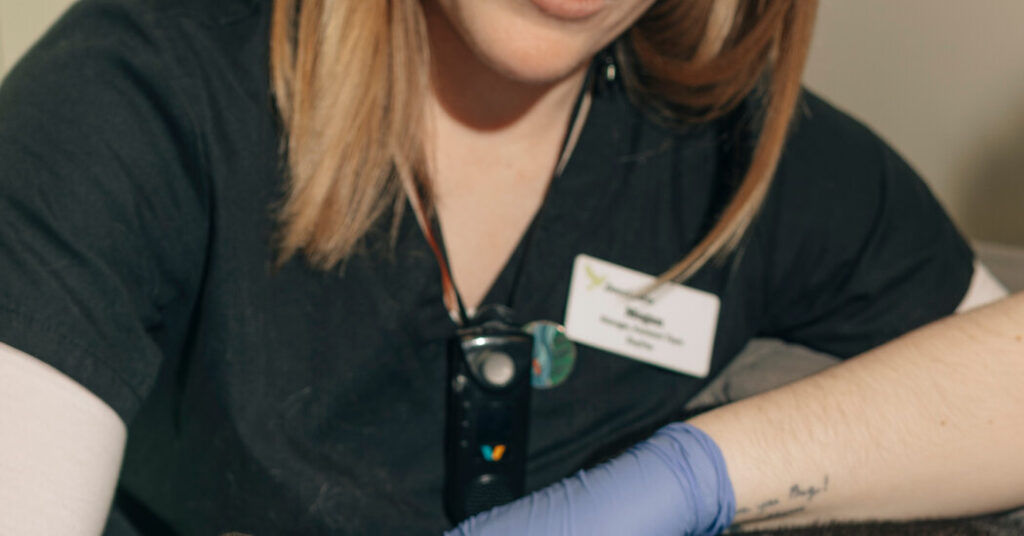“There’s no specific breed we’re looking for,” said Dr. Valerie Latchford, the veterinarian and phlebotomist at Blue Ridge Veterinary Blood Bank, a commercial blood bank in Virginia that relies entirely on donations from pet dogs. “We have everything from dogs that were picked up in shelters, a few of them in other countries, all the way up to like the top winning Spinone” — a shaggy, Italian breed — “of all time, show dogs, service dogs.”
One nonnegotiable: The dogs must seem comfortable with the staff and the process, able to remain relaxed for the roughly five minutes it requires to draw their blood. “They didn’t sign the forms to come in,” Dr. Latchford said. “But they do get to have an opinion on whether they donate or not.”
The dog owner Beth Acker has seen that firsthand. Her former dog, Harley, a Bernese mountain dog who craved food and attention, spent six years as a Blue Ridge donor. To have his blood drawn, Harley lay on his side on a table, spooning with the blood bank’s designated “dog snuggler” while being hand-fed cheese and peanut butter. “He loved it immediately,” Ms. Acker said. “I was really proud of him.”
Harley ultimately donated nearly four gallons of blood; in the final years of his life, Harley needed a transfusion himself, bringing the experience full circle.
On the other hand, Ms. Acker’s coonhound-black Lab mix, Pancho, did not seem comfortable giving blood himself, though he tagged along on Harley’s appointments “to share the awesome treats,” Ms. Acker said.
Nine lives
Cats tend to make for trickier donors. “They don’t just jump on the table and lay down,” said Ms. Reinauer of DoveLewis. Feline blood donations often require sedation, which is not a risk-free procedure. For that reason, DoveLewis uses only cats owned by people who work in the veterinary profession. Ms. Reinauer’s cat Apollo, a sturdy Maine coon, is a donor.


